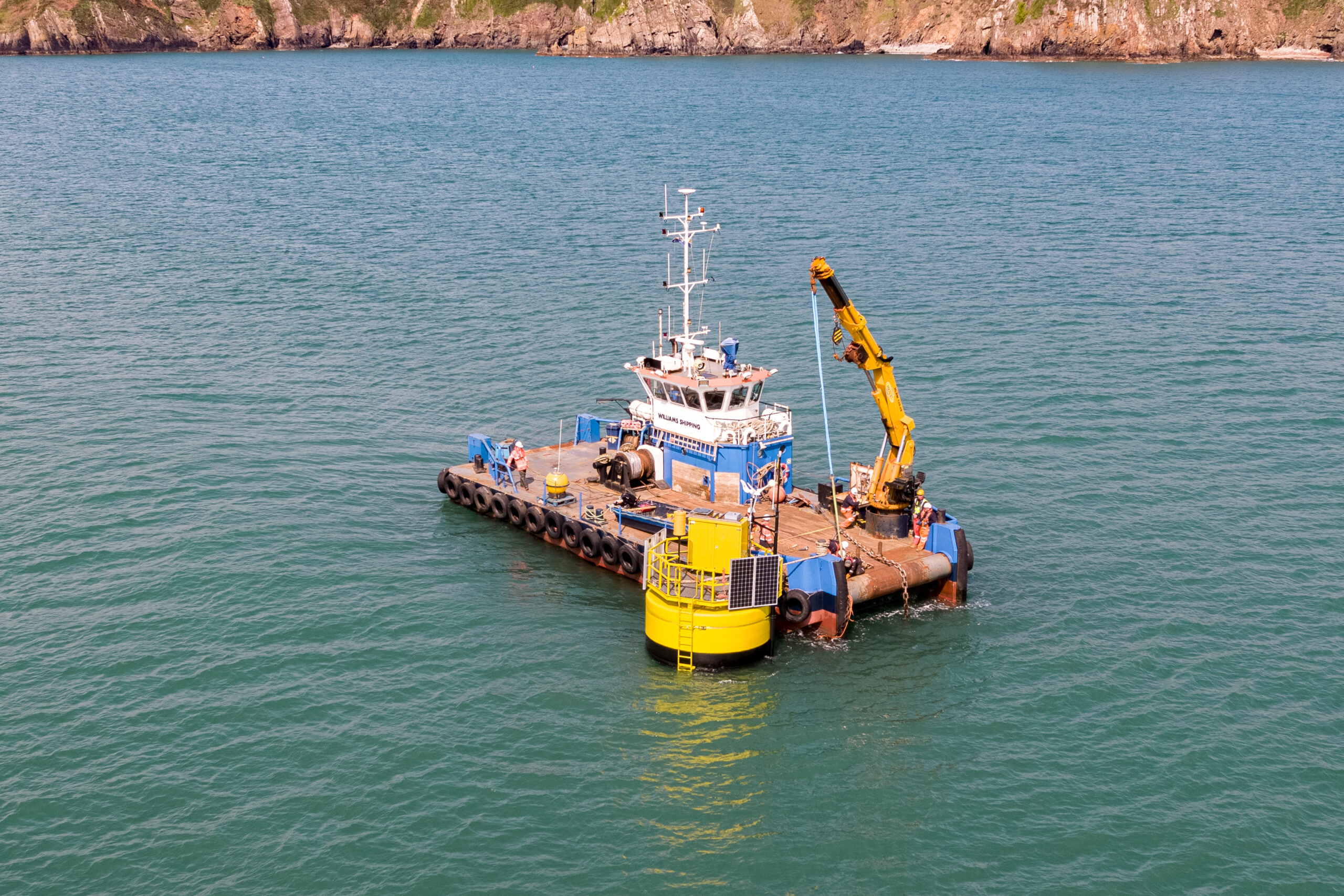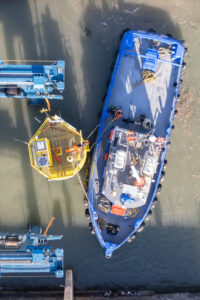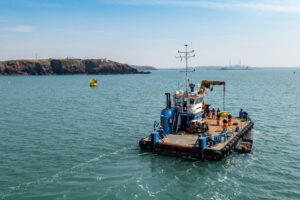
19th May 2022
MEECE Buoy Deployment
Posted by: Kristiyana Urumova / under:
All News
,News
Williams Shipping have been involved in an exciting, innovative renewable energy project – Designed, built and delivered in Pembroke Dock, South Wales.
Wales is an ideal base for marine energy developers with excellent wave resource, strong tidal currents, experienced supply chain, port facilities and grid connection.
The launch of the scientific marine testing buoy for the Offshore Renewable Energy (ORE) Catapult, close to Williams Shipping’s base in Pembroke Dock, will be helping to tackle the net zero and decarbonising challenge. Known as the Marine Energy Engineering Centre of Excellence (MEECE) buoy, the device will help to solve some of the engineering challenges facing the floating offshore wind industry.
Williams Shipping involvement
Careful planning and logistics were needed to deploy the buoy into its position on the Dale Roads Marine Energy Test Area (META) site, which is approximately 8 miles from our base at Pembroke Port, a journey usually taking 1 hour, however, with the buoy alongside it took nearly 2 hours.
The buoy was launched using Mainstay Marine’s boat hoist, and collected by our coastal tug, Wilanne.
The Willendeavour, one of our multicat workboats then deployed the buoy to Dale Roads META site. The Willendeavour was the perfect vessel for this project – she not only has sufficient deck space for all the equipment and operations team, but with her hydraulic crane was able to support the buoy while underway. 
The deployment was over two days; the first day involved deploying a 3 point mooring spread, with large 2t anchors and 80m chains going to a central riser chain. The second day saw the deployment of the MEECE buoy and connection to the riser chain. The buoy was towed alongside the Willendeavour, partly supported by the vessel’s crane.
The smaller wave buoy was deployed from the deck of the Willendeavour last thing on the second day.
There will be ongoing maintenance checks every 2 weeks, which will involve the Willendeavour with a crew of 3 (skipper and 2 crew)
What is the buoy?
The buoy is a modified version of a Hippomarine “25t Through Chain Mooring Buoy” with additional ballast and a top platform.
Its dimensions are 4m diameter, height of 4.5 m (plus equipment on top of the platform), and a dry mass of 8 tonnes. The buoy consists of a 457 mm steel tube inside a polyethylene foam core covered with a 16mm polyurethane elastomer coating. The buoy further features an aluminium top platform with control cabinet, access ladder, and a vertical pipe on the outside to allow for cable routing.
What is the purpose of the buoy?
The purpose is to provide a versatile test platform to facilitate testing of innovative technology in a real sea environment. The initial projects include demonstration of an innovative mooring damper to reduce shock loadings in mooring riser and testing of an energy deck system consisting of modularised solar panels.
What are the next steps?
Following on from the initial demonstration of the buoy, ORE Catapult anticipate increased interest from Welsh innovators resulting in additional follow up projects.
The initial deployment is for a 6 month period with an interim recovery to install additional equipment
Why is the buoy so important for ORE Catapult? Why is it important for Wales?
The deployment of this buoy is a key milestone for ORE Catapult in Wales
It will allow their Marine Energy Engineering Centre of Excellence, based in Pembroke Dock, to enhance their offering to the Welsh marine and offshore renewable energy sectors.
The buoy will provide a unique test and demonstration facility within META, allowing innovative new products and services to be developed at minimal cost and risk to companies.
ORE Catapult is asking innovative companies in Wales with ground-breaking concepts to come and work with them to help commercialise their technologies.
ORE Catapult is working to put Wales and Welsh companies at the heart of the UK’s growing marine and offshore renewable energy sectors, ensuring they play a vital role in tackling global climate change and decarbonising our energy needs, as well as grasping the huge economic opportunities on offer from the growth of the offshore renewables sector.
How will the buoy be used?
The buoy is installed as a fully self-contained setup. This includes a solar and wind powered battery power system (12V and 5V) and a Raspberry Pi and Arduino based Data Acquisition System which is integrating and logging data from a range of sensors, including load measurement shackles in the mooring line to provide mooring forces, a weather station, accelerometers, GPS, and more.
There is also a separate wave measurement buoy a short distance up-wave from our buoy to provide detailed data on impacting waves (time series ENU displacement data, statistical data, spectral data), and this data is being broadcasted via our MEECE buoy.
The buoy will be used for ongoing and upcoming innovation projects under MEECE but is also available to developers and technology providers from the wider UK and beyond.

MEECE is based in Pembroke Dock, and is part of the £60m Pembroke Dock Marine Project
Marine Energy Test Area
Wales’s national marine energy test facility creating a haven for marine energy research.
META is managed by Marine Energy Wales (MEW) Marine Energy Wales |
For more information on our marine work, visit our marine page or call our team on 023 8023 7330.
Share This:





















